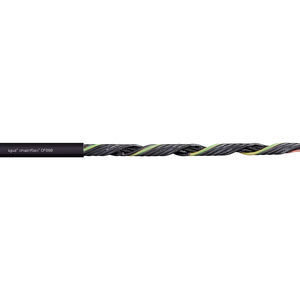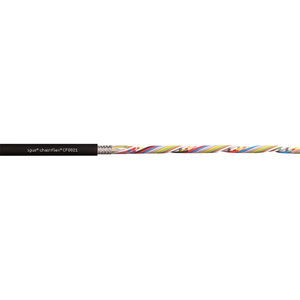
- Company
- Products
- Catalogs
- News & Trends
- Exhibitions
Control cable harness signalI/ODIN
Add to favorites
Compare this product
Characteristics
- Cable type
- signal, I/O, control, DIN
- Applications
- sensor/actuator
- Other characteristics
- flexible
Description
Initiator cables, also referred to as sensor/actuator cables, connect control units and different sensors, or, in the case of reversal of the measurement principle, actuators. Frequently used abbreviations include ini or ini cable (plural: inis).
Sensor or measurement transducers transform physical quantities such as rotation, speed, distance or length into analogue electric impulses. In the case of an actuator, the measured electric current (symbol: I, unit: ampere; A) or voltage (symbol: U, unit: volt; V) is transformed into temperature, pressure or torque.
The connection cable consists of at least three cores with a small cross-section of between 0.14mm² and 0.34mm². In the simplest case, two cores are required for supplying the voltage, while the last core transmits an I/O signal. For sensitive applications, there are shielded versions in addition to the traditional ini cables to avoid EMC disruptions (electromagnetic compatibility).
Sensor/actuator cables for energy chains are cables for bend radii from 4xd. The CF.INI cables are tested in e-chains® with many millions of cycles. They have various approvals and conformities, e.g. UL, CSA, CE Desina and oil-resistance. Diverse cable ends are available for the sensor/actuator cable.
Sensor/actuator cable with 4-5xd
Oil-resistant
Load: for extremely heavy duty applications
Outer jacket: TPE
Overall shield
Coolant-resistant
Low-temperature-flexible
Hydrolysis and microbe-resistant
Halogen-free
Silicone-free
UV-resistant
PVC-free
Oil resistance: oil-resistant (based on DIN EN 60811-404), bio-oil-resistant (based on VDMA 24568 tested with Plantocut 8 S-MB by DEA)
CFRIP®
chainflex® class: 7.6.4.1
Catalogs
No catalogs are available for this product.
See all of igus®‘s catalogsRelated Searches
- Electrical connector
- Electrical cable
- Electrical power supply connector
- Metal electrical connector
- Power cable
- Polymer connector
- Industry connector
- Data electrical cable
- Flexible cable
- Optical cable
- Flexible electrical cable
- PVC-sheathed cable
- Industrial cable
- Cable assembly
- PVC-sheathed electrical cable
- Straight electrical connector
- Optical data cable
- Flame-retardant cable
- Armored cable
- Industry electrical cable
*Prices are pre-tax. They exclude delivery charges and customs duties and do not include additional charges for installation or activation options. Prices are indicative only and may vary by country, with changes to the cost of raw materials and exchange rates.
















